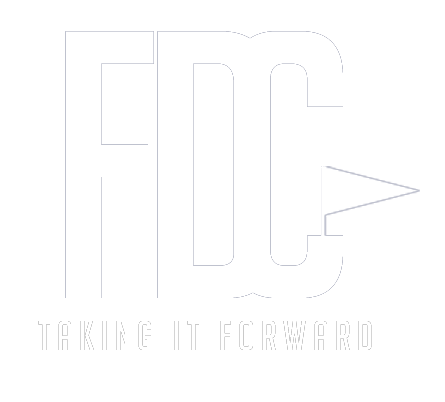Introduction: What is Website Design and Why is it Important?
In today’s digital era, where online presence is paramount, the significance of a well-designed website cannot be overstated. A website serves as a virtual storefront, representing your brand and engaging users in a visually appealing and intuitive manner. Whether you are an individual blogger, a small business owner, or a multinational corporation, understanding the principles of website design is essential for creating an impactful online presence. In this blog, we will delve into the art of website design, exploring key elements, best practices, and emerging trends that will help you craft a digital masterpiece.

We can help you with your digital marketing campaigns.
Advertising: Run ads that get the right results.
Social Media: From strategy to execution, we do it all.
Websites: Create beautiful responsive sites.
SEO: Get traffic on your site.
Key Aspects of Effective Website Design
The following are some important aspects of web design:
1. Understanding Website Design:
Website design encompasses the process of creating and arranging various elements to present information and engage users effectively. It combines aesthetics, functionality, and user experience to achieve a visually pleasing and intuitive interface. Key considerations include layout, color schemes, typography, images, navigation, and interactive elements. The ultimate goal is to create an immersive experience that aligns with your brand identity and resonates with your target audience. According to surveys conducted, 94% of people believe that inadequate design is the primary cause of their lack of trust in websites.
2. User-Centered Design:
A user-centered design approach ensures that your website caters to the needs, preferences, and behaviors of your target users. Conducting user research, creating user personas, and analyzing user feedback are crucial steps in understanding your audience. This knowledge allows you to design an interface that enhances usability, provides intuitive navigation, and delivers a seamless user experience. Remember, a user-friendly website encourages visitors to stay longer, explore more, and convert into loyal customers.
3. Visual Elements: Aesthetics and Branding:
The visual elements of your website play a pivotal role in capturing the attention of visitors and conveying your brand identity. The choice of color palette, fonts, images, and overall visual style should align with your brand’s personality and message. Consistency in visual branding across your website helps create a memorable experience and fosters brand recognition. Striking a balance between creativity and simplicity is essential, ensuring that the design elements enhance rather than distract from the content.
4. Accessibility and Inclusive Design:
Ensuring accessibility is a fundamental aspect of website design, as it enables people with disabilities to access and navigate your content. Inclusive design principles involve creating websites that accommodate individuals with visual impairments, hearing loss, motor disabilities, and cognitive limitations. Features such as alternative text for images, captions for videos, keyboard navigation, and adjustable font sizes enhance accessibility. By embracing inclusive design, you not only broaden your audience but also promote social responsibility and equality.
5. Emerging Trends in Website Design:
The field of website design is continually evolving, driven by advancements in technology and changing user expectations. Stay up-to-date with the latest trends to ensure your website remains fresh and relevant. Some current trends include microinteractions, dark mode, asymmetrical layouts, bold typography, immersive storytelling, and video backgrounds. However, it is essential to balance trends
The Benefits of Mobile-Responsive Web Design:
Mobile-responsive web design has become increasingly crucial in today’s digital landscape. With the proliferation of smartphones and tablets, users are accessing websites on various screen sizes and devices. A report by Hubspot states that mobile device web traffic currently accounts for more than 54 percent of the total global web traffic. A mobile-responsive website adapts and adjusts its layout, content, and functionality to provide an optimal user experience across different screen sizes. Adopting a mobile-first approach ensures that your website is designed and developed with mobile users in mind from the outset. This approach prioritizes the mobile experience, considering factors such as loading speed, touch-friendly navigation, and streamlined content presentation. By implementing mobile-responsive web design, businesses can unlock numerous benefits, including improved user engagement, increased conversion rates, and enhanced search engine visibility.
Key Elements to Consider for Mobile Responsive Web Design:
Firstly, responsive design ensures that your website’s layout adjusts fluidly to different screen sizes, providing a seamless browsing experience for users on any device. This eliminates the need for users to pinch, zoom, or scroll horizontally, making it easier for them to navigate and consume content.
Secondly, optimizing loading speed is crucial for mobile users who expect quick access to information. Minimizing file sizes, compressing images, and leveraging caching techniques are some strategies to enhance website performance.
Additionally, implementing touch-friendly navigation, such as larger buttons and menus, improves usability and ease of interaction for mobile users. Ensuring that text is legible and content is concise is equally important for mobile devices, where screen real estate is limited.
By incorporating these best practices, businesses can create a mobile-friendly website that provides a positive user experience and maximizes engagement and conversions.

We can help you with your digital marketing campaigns.
Advertising: Run ads that get the right results.
Social Media: From strategy to execution, we do it all.
Websites: Create beautiful responsive sites.
SEO: Get traffic on your site.
Moving Towards Web Development:
When it comes to web development, several tools and platforms have emerged to simplify the process and empower businesses to create and manage their websites efficiently.
Shopify and WordPress are two popular web development tools widely used in the industry.
Shopify is an e-commerce platform that enables businesses to build online stores with ease. It provides a user-friendly interface, pre-designed templates, and a range of plugins and extensions to customize the store’s appearance and functionality.
On the other hand, WordPress is a versatile content management system (CMS) that powers millions of websites globally. It offers a wide array of themes, plugins, and customizable options to create websites of various types, from blogs and portfolios to business websites and online stores.
Both Shopify and WordPress provide intuitive interfaces, extensive community support, and robust ecosystems that empower businesses to establish their online presence efficiently without extensive technical expertise.
Conclusion:
The art of website design encompasses the principles of aesthetics, functionality, and user experience to create captivating online experiences. From understanding user-centered design and incorporating visual elements that align with brand identity to embracing responsive design and mobile optimization, businesses can create websites that engage users across various devices and drive their online goals. Additionally, leveraging web development tools like Shopify and WordPress simplifies the development process and empowers businesses to establish their online presence efficiently. By combining the artistry of website design with the power of web development, businesses can craft digital masterpieces that leave a lasting impression, foster user engagement, and propel their success in the dynamic digital landscape.






3 Responses